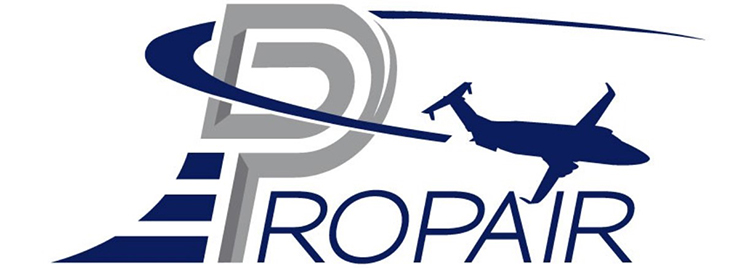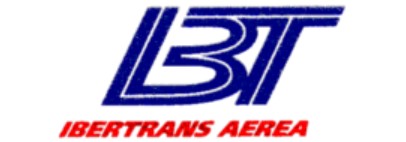Country
Crash of a Swearingen SA226AC Metro II in Río Gallegos
Date & Time:
Nov 23, 1998 at 1445 LT
Registration:
LV-WDV
Survivors:
Yes
Schedule:
Lago Argentino - Río Gallegos
MSN:
TC-271
YOM:
1978
Crew on board:
2
Crew fatalities:
Pax on board:
5
Pax fatalities:
Other fatalities:
Total fatalities:
0
Circumstances:
After takeoff from Lago Argentino Airport, a red warning light came on in the cockpit panel, informing the crew about the incomplete retraction of the left main gear. The crew proceeded to a visual inspection and after confirmation that the left main gear was properly secured in its wheel well, the crew decided to continue to Río Gallegos. On approach, the left main gear did not deploy. After the crew failed to extend it manually, he raised the other landing gear and completed a belly landing. On short final, just prior to flare, both engines were shut down and their propellers were feathered. The aircraft landed on its belly, slid for few dozen metres and came to rest. All seven occupants escaped uninjured and the aircraft was damaged beyond repair.
Probable cause:
The crew completed a belly landing after it was impossible to extend the left main gear due to the deformation and fracture of the brace support of the gear's extension system. The following contributing factors were reported:
- The left main gear suffered previous incident,
- Marginal weather conditions with rain falls and unfavorable wind component,
- The crew started operations with know deficiencies,
- Inappropriate maintenance and technical controls.
- The left main gear suffered previous incident,
- Marginal weather conditions with rain falls and unfavorable wind component,
- The crew started operations with know deficiencies,
- Inappropriate maintenance and technical controls.
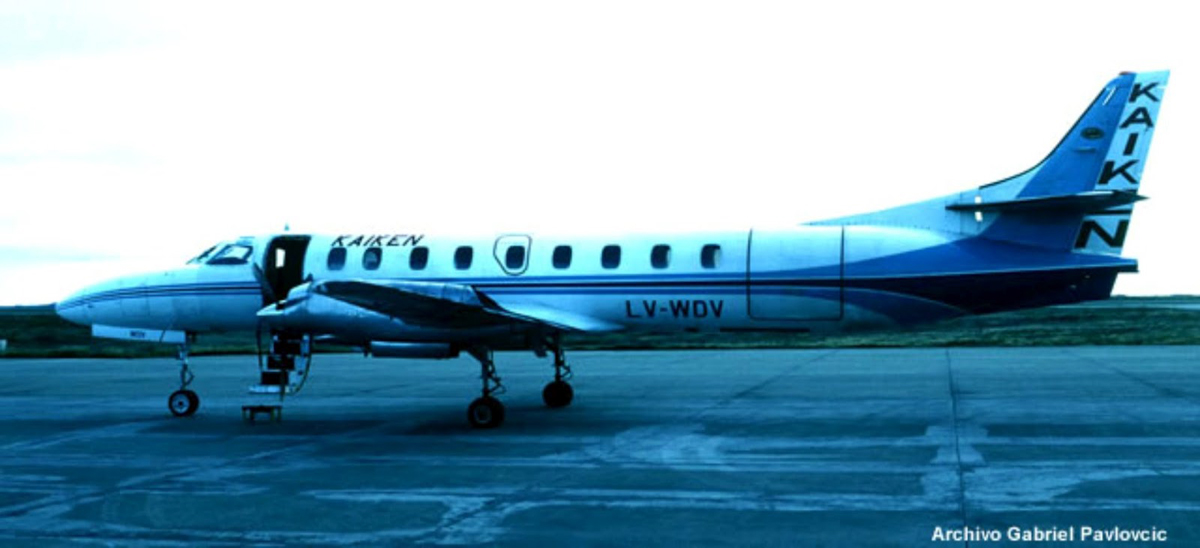
Crash of a Swearingen SA226AC Metro II in Montreal: 11 killed
Date & Time:
Jun 18, 1998 at 0728 LT
Registration:
C-GQAL
Survivors:
No
Schedule:
Montreal - Peterborough
MSN:
TC-233
YOM:
1977
Flight number:
PRO420
Crew on board:
2
Crew fatalities:
Pax on board:
9
Pax fatalities:
Other fatalities:
Total fatalities:
11
Captain / Total hours on type:
4200.00
Copilot / Total hours on type:
93
Aircraft flight hours:
28931
Circumstances:
On the morning of 18 June 1998, Propair 420, a Fairchild-Swearingen Metro II (SA226-TC), C-GQAL, took off for an instrument flight rules flight from Dorval, Quebec, to Peterborough, Ontario. The aircraft took off from Runway 24 left (L) at 0701 eastern daylight time. During the ground acceleration phase, the aircraft was pulling to the left of the runway centreline, and the right rudder was required to maintain take-off alignment. Two minutes later, Propair 420 was cleared to climb to 16 000 feet above sea level (asl). At 0713, the crew advised the controller of a decrease in hydraulic pressure and requested to return to the departure airport, Dorval. The controller immediately gave clearance for a 180° turn and descent to 8000 feet asl. During this time, the crew indicated that, for the moment, there was no on-board emergency. The aircraft initiated its turn 70 seconds after receiving clearance. At 0713:36, something was wrong with the controls. Shortly afterward came the first perceived indication that engine trouble was developing, and the left wing overheat light illuminated about 40 seconds later. Within 30 seconds, without any apparent checklist activity, the light went out. At 0718:12, the left engine appeared to be on fire, and it was shut down. Less than one minute later, the captain took the controls. The flight controls were not responding normally: abnormal right aileron pressure was required to keep the aircraft on heading. At 0719:19, the crew advised air traffic control (ATC) that the left engine was shut down, and, in response to a second suggestion from ATC, the crew agreed to proceed to Mirabel instead of Dorval. Less than a minute and a half later, the crew informed ATC that flames were coming out of the 'engine nozzle'. Preparations were made for an emergency landing, and the emergency procedure for manually extending the landing gear was reviewed. At 0723:10, the crew informed ATC that the left engine was no longer on fire, but three and a half minutes later, they advised ATC that the fire had started again. During this time, the aircraft was getting harder to control in roll, and the aileron trim was set at the maximum. Around 0727, when the aircraft was on short final for Runway 24L, the landing gear lever was selected, but only two gear down indicator lights came on. Near the runway threshold, the left wing failed upwards. The aircraft then rotated more than 90° to the left around its longitudinal axis and crashed, inverted, on the runway. The aircraft immediately caught fire, slid 2500 feet, and came to rest on the left side the runway. When the aircraft crashed, firefighters were near the runway threshold and responded promptly. The fire was quickly brought under control, but all occupants were fatally injured.
Probable cause:
Findings as to Causes and Contributing Factors:
- The crew did not realize that the pull to the left and the extended take-off run were due to the left brakes' dragging, which led to overheating of the brake components.
- Dragging of the left brakes was most probably caused by an unidentified pressure locking factor upstream of the brakes on take-off. The dragging caused overheating and leakage, probably at one of the piston seals that retain the brake hydraulic fluid.
- When hydraulic fluid leaked onto the hot brake components, the fluid caught fire and initiated an intense fire in the left nacelle, leading to failure of the main hydraulic system.
- When the L WING OVHT light went out, the overheating problem appeared corrected; however, the fire continued to burn.
- The crew never realized that all of the problems were associated with a fire in the wheel well, and they did not realize how serious the situation was.
- The left wing was weakened by the wing/engine fire and failed, rendering the aircraft uncontrollable.
Findings as to Risk:
- Numerous previous instances of brake overheating or fire on SA226 and SA227 aircraft had the potential for equally tragic consequences. Not all crews flying this type of aircraft are aware of its history of numerous brake overheating or fire problems.
- The aircraft flight manual and the emergency procedures checklist provide no information on the possibility of brake overheating, precautions to prevent brake overheating, the symptoms that could indicate brake problems, or actions to take if overheated brakes are suspected.
- More stringent fire-blocking requirements would have retarded combustion of the seats, reducing the fire risk to the aircraft occupants.
- A mixture of the two types of hydraulic fluid lowered the temperature at which the fluid would ignite, that is, below the flashpoint of pure MIL-H-83282 fluid.
- The aircraft maintenance manual indicated that the two hydraulic fluids were compatible but did not mention that mixing them would reduce the fire resistance of the fluid.
Other Findings:
- The master cylinders were not all of the same part number, resulting in complex linkage and master cylinder adjustments, complicated overall brake system functioning, and difficult troubleshooting of the braking system. However, there was no indication that this circumstance caused residual brake pressure.
- The latest recommended master cylinders are required to be used only with specific brake assembly part numbers, thereby simplifying adjustments, functioning, and troubleshooting.
- Although the emergency checklist for overheating in the wing required extending the landing gear, the crew did not do this because the wing overheat light went out before the crew initiated the checklist.
- The effect of the fire in the wheel well made it difficult to move the ailerons, but the exact cause of the difficulty was not determined.
- The crew did not realize that the pull to the left and the extended take-off run were due to the left brakes' dragging, which led to overheating of the brake components.
- Dragging of the left brakes was most probably caused by an unidentified pressure locking factor upstream of the brakes on take-off. The dragging caused overheating and leakage, probably at one of the piston seals that retain the brake hydraulic fluid.
- When hydraulic fluid leaked onto the hot brake components, the fluid caught fire and initiated an intense fire in the left nacelle, leading to failure of the main hydraulic system.
- When the L WING OVHT light went out, the overheating problem appeared corrected; however, the fire continued to burn.
- The crew never realized that all of the problems were associated with a fire in the wheel well, and they did not realize how serious the situation was.
- The left wing was weakened by the wing/engine fire and failed, rendering the aircraft uncontrollable.
Findings as to Risk:
- Numerous previous instances of brake overheating or fire on SA226 and SA227 aircraft had the potential for equally tragic consequences. Not all crews flying this type of aircraft are aware of its history of numerous brake overheating or fire problems.
- The aircraft flight manual and the emergency procedures checklist provide no information on the possibility of brake overheating, precautions to prevent brake overheating, the symptoms that could indicate brake problems, or actions to take if overheated brakes are suspected.
- More stringent fire-blocking requirements would have retarded combustion of the seats, reducing the fire risk to the aircraft occupants.
- A mixture of the two types of hydraulic fluid lowered the temperature at which the fluid would ignite, that is, below the flashpoint of pure MIL-H-83282 fluid.
- The aircraft maintenance manual indicated that the two hydraulic fluids were compatible but did not mention that mixing them would reduce the fire resistance of the fluid.
Other Findings:
- The master cylinders were not all of the same part number, resulting in complex linkage and master cylinder adjustments, complicated overall brake system functioning, and difficult troubleshooting of the braking system. However, there was no indication that this circumstance caused residual brake pressure.
- The latest recommended master cylinders are required to be used only with specific brake assembly part numbers, thereby simplifying adjustments, functioning, and troubleshooting.
- Although the emergency checklist for overheating in the wing required extending the landing gear, the crew did not do this because the wing overheat light went out before the crew initiated the checklist.
- The effect of the fire in the wheel well made it difficult to move the ailerons, but the exact cause of the difficulty was not determined.
Final Report:
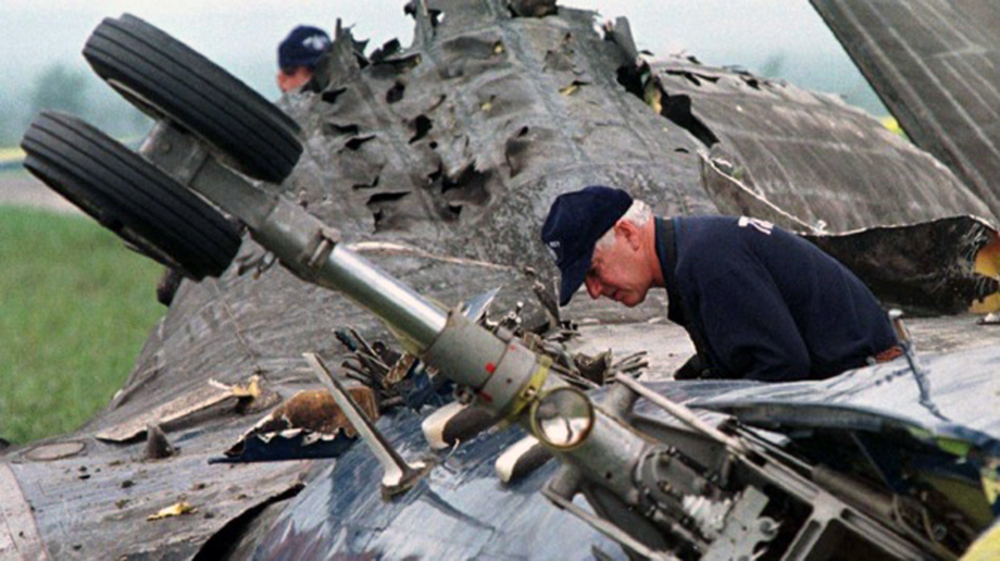
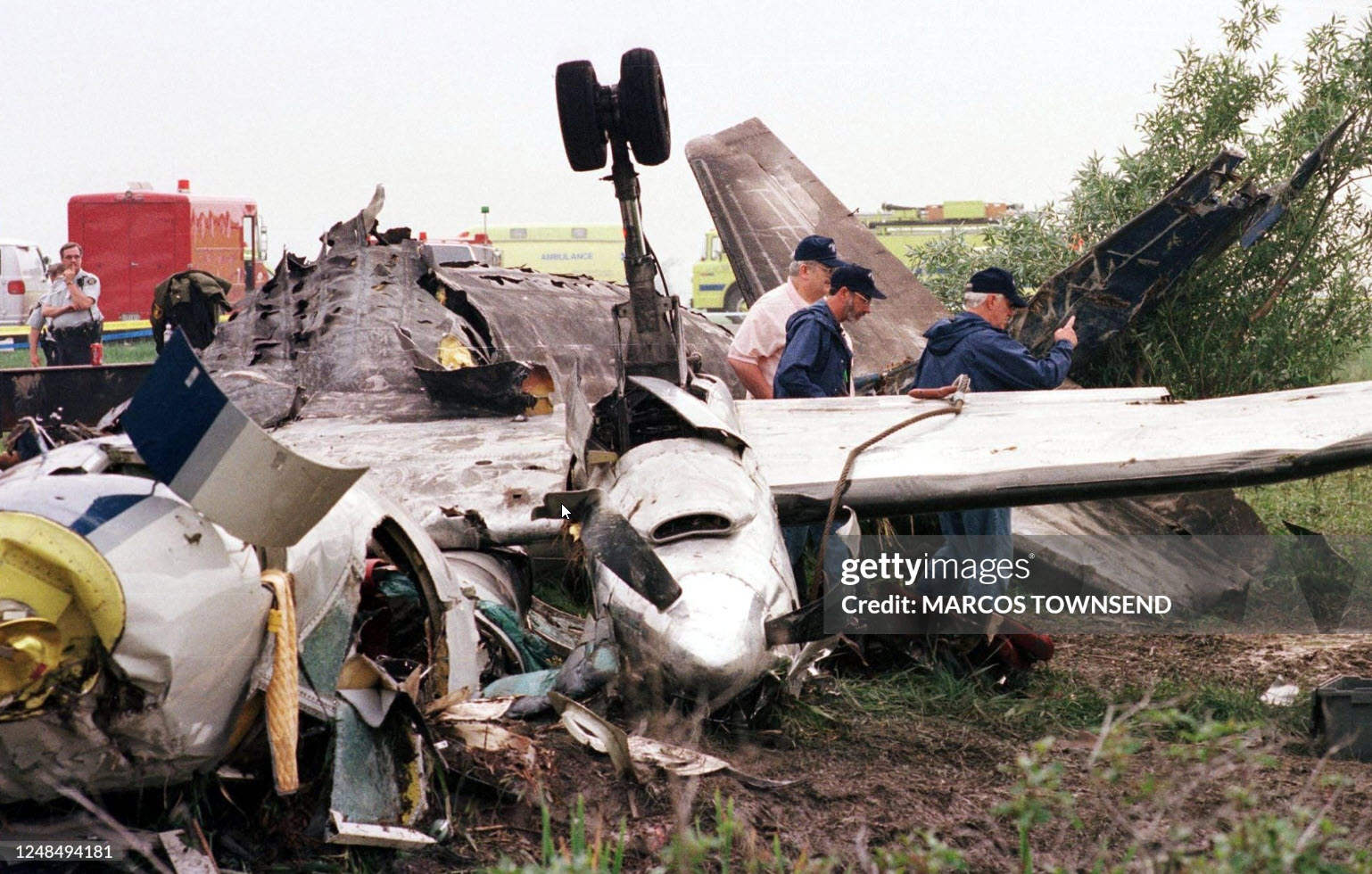
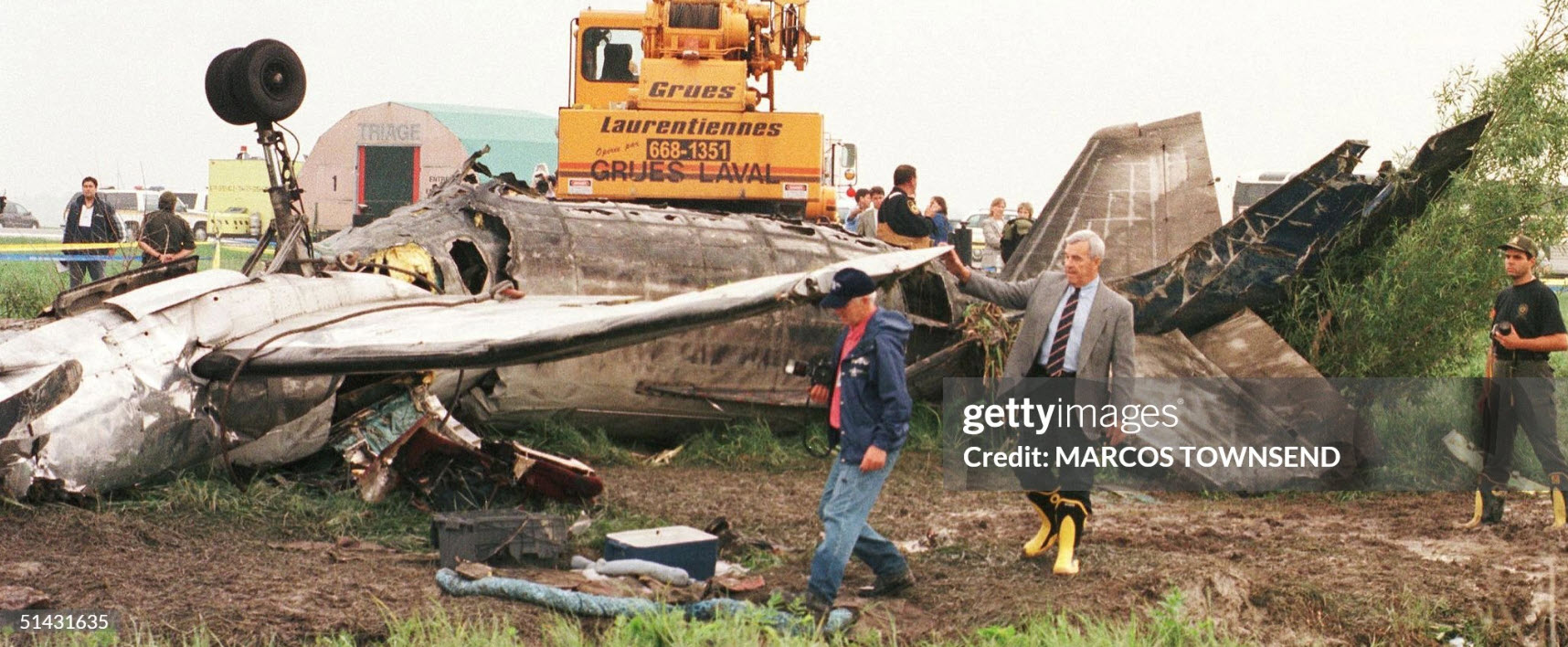
Crash of a Swearingen SA226TC Metro II in Barcelona: 2 killed
Date & Time:
Feb 19, 1998 at 0004 LT
Registration:
EC-GDG
Survivors:
No
Schedule:
Barcelona - Brussels
MSN:
TC-220
YOM:
1976
Flight number:
IBT595A
Crew on board:
2
Crew fatalities:
Pax on board:
0
Pax fatalities:
Other fatalities:
Total fatalities:
2
Captain / Total hours on type:
952.00
Copilot / Total hours on type:
394
Aircraft flight hours:
17546
Circumstances:
Few minutes after a night takeoff from Barcelona Airport, en route to Brussels, the copilot informed ATC about technical problems and was cleared to return for an emergency landing. After been cleared for an approach to runway 07, the crew descended to 6,000 feet and 3,000 feet successively. At 0000:15 seconds, the aircraft passed over the outer marker at an altitude of 1,500 feet and a speed of 170 knots. At a distance of six km from the runway threshold, the aircraft started to deviate from the approach path to the right and one minute later, it struck the ground at a speed of 130 knots, crashing in a palmgrove located 3,2 km short of runway and bursting into flames. The aircraft was destroyed by a post crash fire and both pilots were killed.
Probable cause:
Investigations were unable to determine the nature of the technical problems that the crew reported. However, the assumption that the left engine partially failed was not ruled out. The accident resulted from an inappropriate angle of descent during the approach to runway 07 in conditions of low visibility combined with a possible fatigue of the crew due to a long duty period, and the possible left engine malfunction which required yaw compensation and special attention from the pilots. This caused the aircraft to deviate from the approach path and to descend below the MDA until impact with the ground.
Final Report:
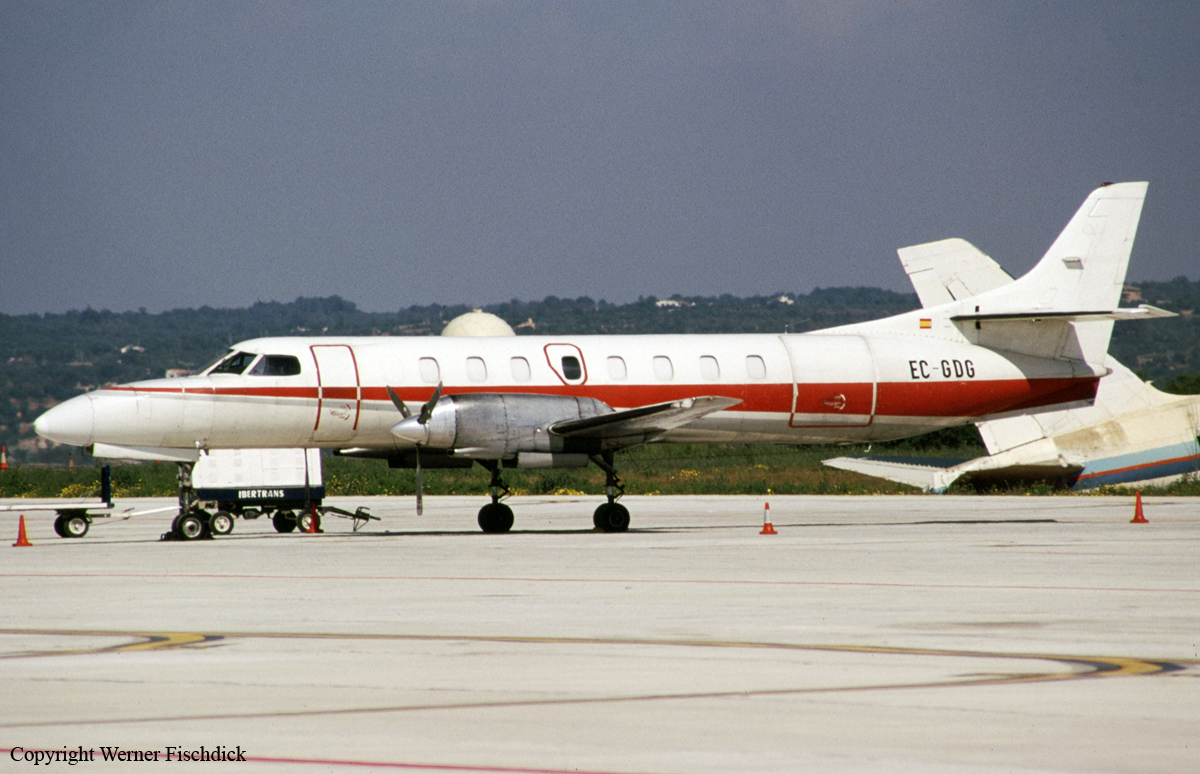
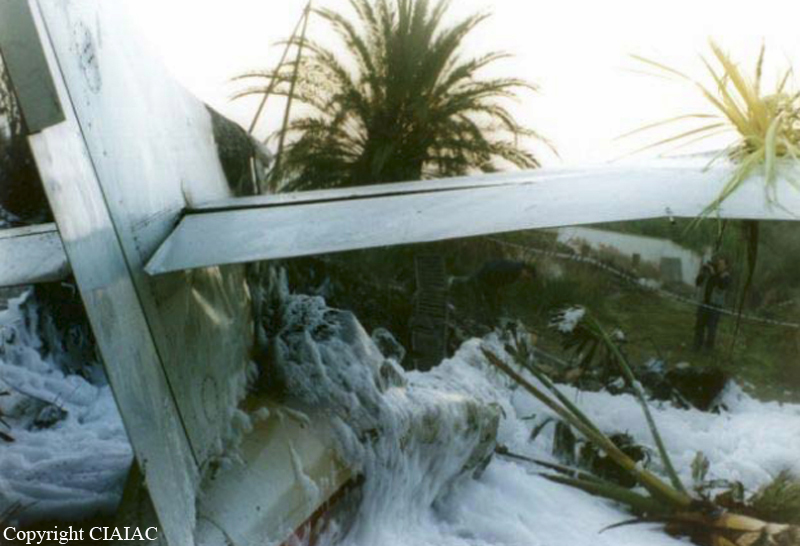
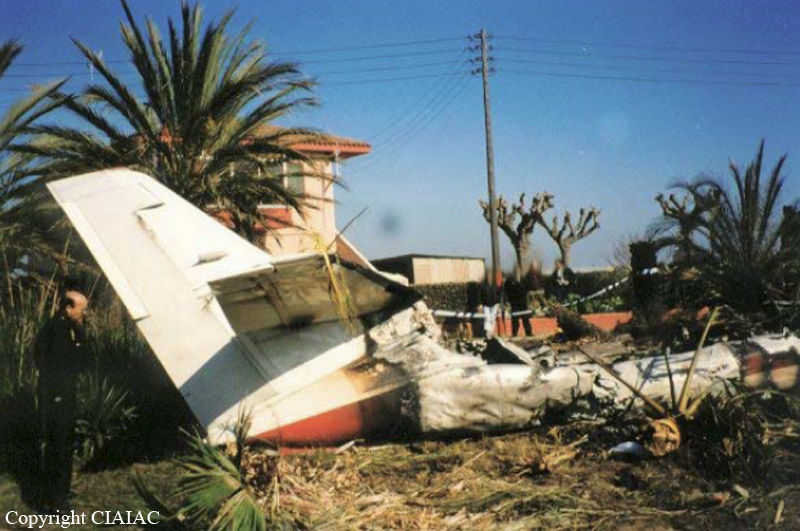
Crash of a Swearingen SA226TC Metro II in La Vertiente: 10 killed
Date & Time:
Dec 12, 1997 at 1705 LT
Registration:
CP-1635
Survivors:
Yes
Schedule:
La Vertiente - Santa Cruz
MSN:
TC-359
YOM:
1980
Crew on board:
2
Crew fatalities:
Pax on board:
17
Pax fatalities:
Other fatalities:
Total fatalities:
10
Circumstances:
After takeoff from runway 01/19 at La Vertiente Airport, both engines lost power. The aircraft lost height, struck trees and crashed in a field some 300 metres past the runway end. A crew member and nine passengers were killed while nine other occupants were injured. The aircraft was completing a charter flight to Santa Cruz-Viru Viru Airport on behalf of Servicios Aéreos Vargas de España (SAVE), carrying employees of the Tesoro Bolivia Petroleum Company based in San Antonio, Texas.
Probable cause:
Loss of engine power for undetermined reasons.
Crash of a Swearingen SA226TC Metro II in Island Lake
Date & Time:
Nov 2, 1997 at 1257 LT
Registration:
C-FNKN
Survivors:
Yes
Schedule:
Winnipeg - Island Lake
MSN:
TC-296
YOM:
1979
Crew on board:
2
Crew fatalities:
Pax on board:
9
Pax fatalities:
Other fatalities:
Total fatalities:
0
Circumstances:
Following a firm touchdown on a gravel airstrip at Island Lake Airport, the crew heard a noise when the left wing dropped. Suspecting a left main gear failure, the captain initiated a go-around procedure and decided to divert to another airport with better facilities. Shortly later, the hydraulic pressure was lost and fuel quantity began to drop rapidly. The crew decided to return to land at Island Lake. Upon touchdown, the left main gear collapsed and the aircraft veered off runway to the left before coming to rest. All 11 occupants escaped uninjured while the aircraft was damaged beyond repair. slid off the runway. The pilot reported a very strong cross wind and that he touched down with crab.
Probable cause:
The left main gear drag links may have failed in overload.
Crash of a Swearingen SA226TC Metro II in Des Moines
Date & Time:
Aug 19, 1997 at 2221 LT
Registration:
N224AM
Survivors:
Yes
Schedule:
Wichita - Des Moines
MSN:
TC-227
YOM:
1977
Crew on board:
1
Crew fatalities:
Pax on board:
0
Pax fatalities:
Other fatalities:
Total fatalities:
0
Captain / Total hours on type:
93.00
Aircraft flight hours:
51119
Circumstances:
During a landing approach, the pilot noted that the right engine remained at a high power setting, when he moved the power levers to reduce power. He executed a missed approach and had difficulty keeping the airplane straight and level. The pilot maneuvered for a second approach to land. After landing, he could not maintain directional control of the airplane and tried to go around, but the airplane went off the end of the runway and impacted the localizer antenna. The pilot did not advise ATC of the problem nor did he declare an emergency. The Pilot's Operating Handbook stated that for a power plant control malfunction, the affected engine should be shut down, and a single engine landing should be made. The power control cable was found disconnected from the anchoring point. A safety tab was broken off the housing, allowing it to unscrew. About one month before the accident, maintenance had been performed on the right engine to correct a discrepancy about the right engine power lever being stiff. The mechanic re-rigged the right engine power cable.
Probable cause:
The pilot's improper in-flight planning/decision and failure to perform the emergency procedure for shut-down of the right engine. Factors relating to the accident were: the power lever cable became disconnected from the fuel control unit, due to improper maintenance; and reduced directional control of the airplane, when one engine remained at a high power setting.
Final Report:
Crash of a Swearingen SA226TC Metro II in Ottawa
Date & Time:
Jun 13, 1997 at 1248 LT
Registration:
C-FEPW
Survivors:
Yes
Schedule:
Hamilton - Ottawa
MSN:
TC-294
YOM:
1979
Crew on board:
2
Crew fatalities:
Pax on board:
0
Pax fatalities:
Other fatalities:
Total fatalities:
0
Captain / Total hours on type:
1930.00
Copilot / Total hours on type:
55
Circumstances:
The flight crew were properly licensed and certified to conduct the flight. The pilot had a total flying time of approximately 2,240 hours, of which 1,930 were on the occurrence aircraft type. The co-pilot received his commercial pilots license in 1988 and had approximately 500 hours total flying time. He completed his instrument rating on 15 December 1996 and his initial training on the SA226-TC was completed in March 1997 in British Columbia with a different company. He had not flown for 44 days at the time his recurrent training was completed on 09 June 1997. This was the co-pilot=s third day of operational flying for the company; he had accumulated approximately 55 hours total time on the aircraft type. The co-pilot was flying the aircraft for a radar-vectored, localizer/back-course approach to runway 25 of the Ottawa/Macdonald-Cartier airport. Descending out of 10,000 feet above sea level, the crew completed a briefing for the approach. The weather conditions at the time did not necessitate a full instrument approach briefing because the crew expected to fly the approach in visual conditions. Air traffic control requested that the crew fly the aircraft at a speed of 180 knots or better to the Ottawa non-directional beacon (NDB), which is also the final approach fix (FAF) for the approach to runway 25. At approximately eight nautical miles from the airport the aircraft was clear of cloud and the crew could see the runway. In order to conduct some instrument approach practice, the pilot, who was also the company training pilot, placed a map against the co-pilot=s windscreen to temporarily restrict his forward view outside the aircraft. The approach briefing was not amended to reflect the simulated instrument conditions for the approach. The co-pilot accurately flew the aircraft on the localizer to the FAF, at which point, he began to slow the aircraft to approximately 140 knots and requested that the pilot set 2 flap, which he did. Once past the FAF, the copilot=s workload increased, and he had difficulty flying the simulated approach. On short final to runway 25, the pilot removed the map from the co-pilot=s windscreen. The co-pilot noted that the aircraft was faster and higher than normal and he tried to regain the proper approach profile. By the time the aircraft reached the threshold of the runway 25, it was approximately 500 feet above ground, and at a relatively high speed, so the pilot took control of the aircraft for the landing. The pilot attempted to descend and slow the aircraft as it proceeded down the length of the runway and stated that he had just initiated an overshoot when he heard the first sounds of impact. Runway 25 is 8,000 feet long. The first signs of impact on the runway were made by the propellers, with propeller marks beginning about 4,590 feet from the threshold of runway 25. The aircraft came to rest about 6,770 feet from the threshold, and a fire broke out in the area of the right engine. The co-pilot opened the main door of the aircraft while the pilot shut down the aircraft systems, and both exited the aircraft uninjured. The maximum speed for extending the landing gear on this aircraft is 176 knots, and the company standard operating procedures (SOPs) for a normal instrument approach stipulate that the aircraft should cross the final approach fix at a speed of 140 knots, with a 2-flap setting, and with the landing gear lowered. The company SOPs require that all checklist items, from the after start checks through to the after landing checks inclusive, be actioned through a challenge and response method with each item called individually. The first item of the before landing checks is a landing gear .....Down/3 greens@. The co-pilot did not recall being challenged for the landing gear check, and the pilot could not remember selecting the landing gear switch to the down position. Neither pilot checked for the three green lights prior to the occurrence. The pilot stated that it was his habit to check if the landing lights were on prior to landing because it was his habit to turn them on only after the landing gear had been extended. He remembered checking to see that the landing lights were on and so was satisfied that the gear was down. The co-pilot assumed that, because the aircraft had passed the NDB, the before landing checks had been completed; they are normally completed before or at that point during an approach. Neither pilot recalled hearing a gear warning horn prior to the impact. When the aircraft systems were inspected, the landing gear selector was found in the up position. Tests were conducted on the landing gear warning system which revealed that the gear warning horn did not function. A closer examination of the system revealed a faulty diode. The diode was replaced and when the warning system was checked again, it functioned properly. The pilot stated that the gear warning horn on the aircraft had functioned properly during the training for the co-pilot one week earlier.
Probable cause:
The aircraft was landed with the landing gear retracted because the flight crew did not follow the standard operating procedures and extend the landing gear. Contributing to the occurrence were the lack of planning, coordination, and communication on the part of the crew; and the failure of the landing gear warning system.
Final Report:
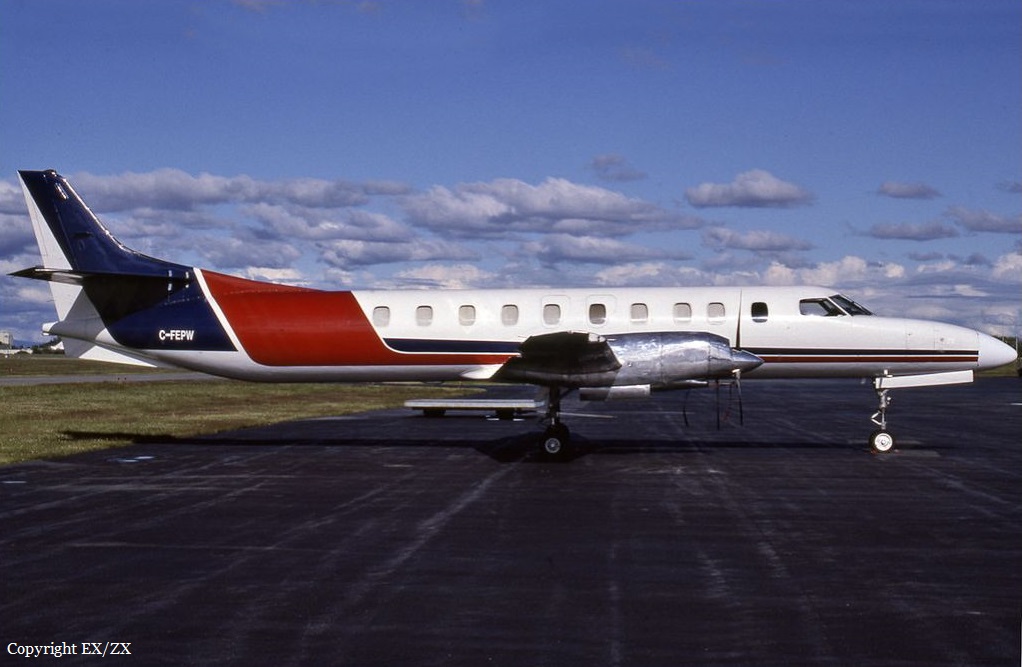
Crash of a Swearingen SA226AC Metro II in Uruapan
Date & Time:
Feb 4, 1997
Registration:
XA-HAO
Survivors:
Yes
Schedule:
Lázaro Cárdenas – Uruapan
MSN:
TC-356
YOM:
1980
Crew on board:
2
Crew fatalities:
Pax on board:
10
Pax fatalities:
Other fatalities:
Total fatalities:
0
Circumstances:
After touchdown at Uruapan-General Ignacio López Rayón Airport, the crew started the braking procedure and activated the reverse thrust systems when control was lost. The aircraft veered off runway to the right, lost a landing gear and came to rest. All 12 occupants escaped uninjured while the aircraft was damaged beyond repair.
